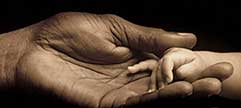 |
|
|
|||
|
|
|
|
Estonia is known as the window on the West, gateway to the East. Situated on the shores of the Baltic Sea, Estonia has historically served as a crossroads between east and west. It is the smallest of the three Baltic countries, with a population of about 1.5 million. Nevertheless its area is larger than the one of Denmark, Switzerland or the Netherlands.
Having regained its independence in 1991, Estonia has become a successful and advanced country. Independence has resulted in stable currency, well-stocked shops and safe streets. Estonia - future member of the European Union - is striving towards higher life standard, stronger economy and higher competitive ability. Estonia has much to highlight and share, including both what it has already accomplished and what it has yet to achieve. TARTU (www.tartu.ee), the city of good thoughts, is internationally known for its symbol - one of the oldest universities in Europe. Many international scientific conferences are held here, in the second largest city of Estonia. The sights are being restored, the number of high-level hotels, recreation sites, cafés and restaurants is continually increasing. Claiming to be the most beautiful city in Estonia, Tartu has a reputation of Athens on the River Emajõgi.
|
||||||||||||||
Conference Secretariat: |
Estonian Genome Foundation, Riia 23, 51010 Tartu, Estonia
Ph: +372 56 469494, fax: +37 27 440421, e-mail: geneforum@genomics.ee |
||||||||||||||